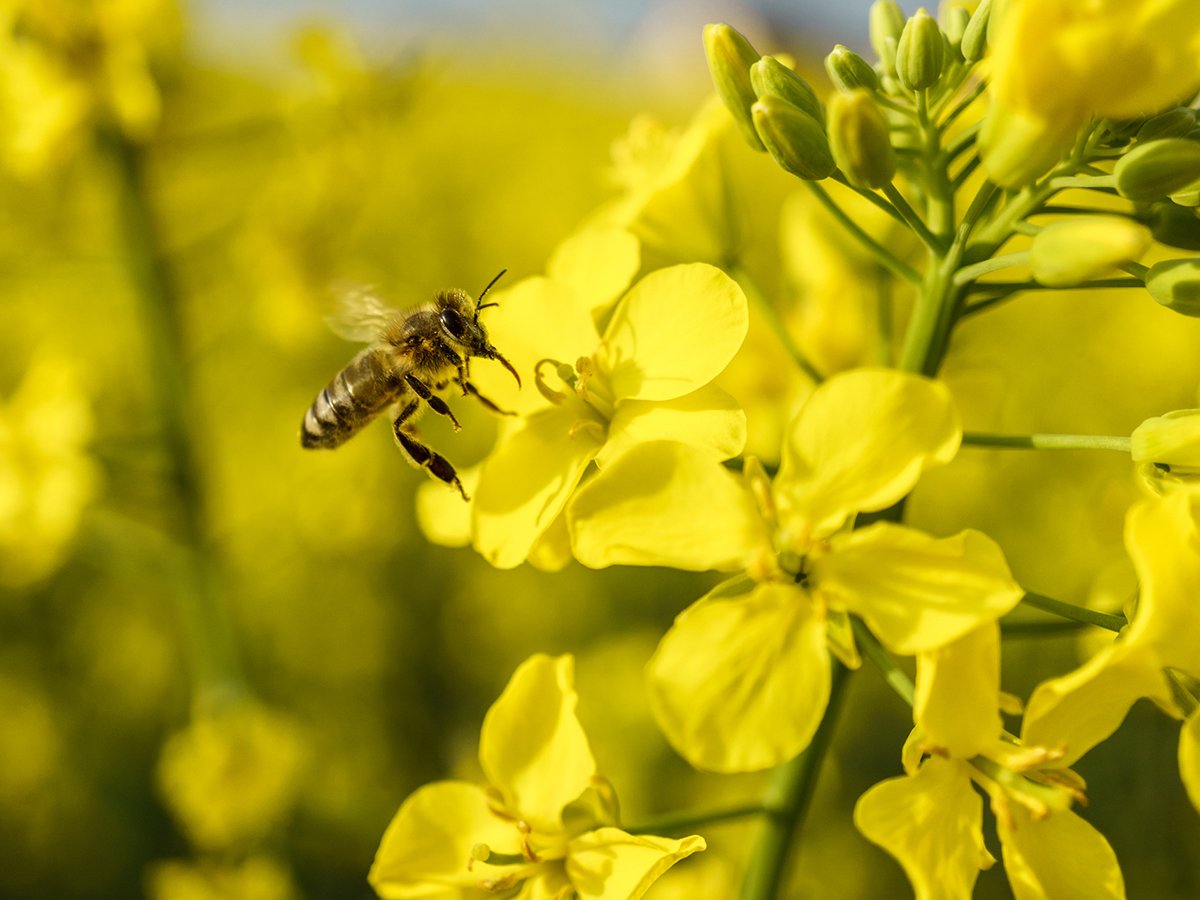Making your own vinegar
Dear TEAM: We’d like to know about vinegar, all types of vinegar, from white to wine, cider, balsamic, etc. What is the meaning of acetic acid and the varying amounts of such, and what is it? What are the healthful properties and pros and cons of using it? Why did it disappear off restaurant and domestic tables? Remember fish and chips and the vinegar decanter? Remember the vinegar decanter, period? It had its place on the family table.
Re: June 19 issue, earthworm problem. I was beginning to think the worms were causing my garden soil to deteriorate, too. I didn’t like what I saw. However, I hand dug it and applied more organic material and it’s just great now. It wasn’t worms causing it at all, but two consecutive terrible wet years. – H.M., Little Smoky, Alta.
Read Also

Invigor Gold variety viewed as threat to condiment mustard
Invigor Gold, the canola-quality mustard developed by BASF, is on a collision course with Canada’s condiment mustard industry. It’s difficult to see how the two can co-exist.
Dear H.M.: We are happy your earthworm problem has been solved. Answers about vinegar require checking what we learned years ago in chemistry class. I hope the following explanations answer your questions. It has been a learning process for me, too.
The name vinegar is from the French word vinaigre, which means sour wine. This sour wine is the result of fermentation. A dilute (weak) alcohol is the raw material from which all vinegar is made. Bacteria attach to alcohol and oxidize it into acetic acid, producing the sour liquid known as vinegar.
Kinds of vinegar
The special flavors, colors and odors of the different kinds of vinegar come from the substances from which they are made.
- Cider vinegar is made from the juice of apples, has an apple-like odor and is brown or yellow.
- White vinegar (distilled) is made by distilling natural vinegar in a vacuum. Its source may be molasses or whey. It is water-white in color and has no flavor, other than acidity.
- Wine vinegar, as the name suggests, is made from red or white wine.
- Malt vinegar comes from cereals or grains (beers).
- Rice vinegar is made from soured and fermented rice wines. It is very mild, and popular in Asian cooking.
- Balsamic vinegar is sweet-tasting. It is made from Trebbiano grape juice which has been aged in different kinds of wood. The woods (and how long and in which order the vinegar is kept in them) are part of the reason various balsamic vinegars taste so different.
- Flavored vinegars are made by steeping a wide range of ingredients in vinegars. These include herbs, such as tarragon, mint, basil and thyme, garlic, chillies, edible flowers and fruits such as raspberries and gooseberries. Herb-infused vinegars are a quick and easy way to add flavor to food.
- To make flavored vinegars, stuff clean herbs and spices into jars, cover with vinegar and steep for a month before using. Softer herbs like basil and sage need to be strained out and discarded after the steeping time has elapsed. Add fresh sprigs to gift bottles to identify their flavors.
The blossoms of edible flowers may be added to herb-infused vinegars. For example, add orange calendula blossoms and thyme sprigs to white vinegar for a beautiful orange thyme vinegar. Chive blossoms yield a pungent purple vinegar, and bachelor buttons make a light violet vinegar.
Check with a gardening book for listings of edible flowers. Some colors imparted by edible flowers will fade in direct light; setting out a bottle of flower-tinted vinegar to glow on a window ledge may result in fading.
Source: Skinny Feasts by Dee Hobs-bawn-Smith, Whitecap Books, 1997.
Acetic acid
Acid is the name of a group of chemical compounds that have a sour taste and a pH of less than seven. Pure water is neutral with a pH of seven and alkalies have more than a seven pH.
Some acids are harmless and can be ingested, such as citric acid in oranges and lemons, tartaric acid in grapes, malic acid in apples and acetic acid in vinegar.
Acetic acid, the sour, pungent acid element in vinegar, has a chemical formula C2H402.
Pure acetic acid is called glacial acetic acid because it solidifies at 17 degrees C, the temperature of a cool room. When diluted with water it is known simply as acetic acid. Vinegar in the home contains about four to seven percent acetic acid.
When making pickles, use a commercial vinegar with a minimum of five percent acetic acid. Pickling vinegar has a seven percent acidity. It produces a more astringent flavor, has more preservation power and a slightly more crisp texture. Cider and malt vinegars add subtle flavor differences, but they also darken light colored fruits and vegetables.
White vinegar is generally preferred for pickles. Do not use homemade vinegars for pickling because the acetic acid content is unknown.
Pros and cons of vinegar
There isn’t enough reliable nutrition information for me to comment on the health properties of vinegar. It has essentially no nutritional value.
It is great for adding flavor to food without adding fat. Sprinkle on meats, vegetables and salads for tasty fat-free toppings.
Vinegar’s acid qualities help preserve foods, as in pickles, sauerkraut and some salad dressings. Be sure to follow directions carefully when preserving. Never dilute the vinegar more than indicated in the recipe. For a milder flavor, add extra sugar rather than less vinegar.
Where is the decanter?
Food fads and styles change. Food is a reflection of our social, economic and cultural history. During the depression years, an inexpensive food like vinegar added flavor to the basic foods available. As times improved, lemon juice, slices of lemon, various herbs and spices and flavored vinegar were used more often.
The demise of the “use on everything” vinegar decanter on kitchen tables reflects this change in our times.
Perhaps our readers can suggest other reasons for the disappearance of the vinegar decanter.
Raspberry vinegar
4 cups 1 L
raspberries
5 cups white 1.25 L
vinegar
Cherry vinegar
8 cups sweet 2 L
cherries
5 cups white 1.25 L
vinegar
Combine fruit (raspberries or cherries) and vinegar in a large, stainless steel or enamel saucepan. Bring to a boil and boil gently for 15 minutes.
Fill boiling water canner with water. Place four clean half-pint (250 mL) mason jars in canner. Cover, bring water to a boil and boil at least 10 minutes to sterilize jars.
Place snap lids in boiling water. Boil five minutes to soften sealing compound.
Pour vinegar mixture through a dampened cheesecloth-lined sieve. Return vinegar to saucepan. Bring to a boil.
Ladle vinegar into a hot sterilized jar to within 1Ú4 inch (0.5 cm) of top rim (headspace). Wipe jar rim to remove any stickiness. Center snap lid on jar. Apply screw band just until fingertip tight. Place jars in canner.
Cover canner. Return water to a boil. Process five minutes. Remove jars. Cool 24 hours. Store in a cool, dark place.
Source: Bernardin, Guide to Home Preserving, 1995.
Unique cookbook
A book that discusses things like the disappearance of the vinegar decanter is A Century of Canadian Home Cooking, 1900 Through the ’90s, by Carol Ferguson and Margaret Fraser, published by Prentice Hall Canada Inc., 1992.
It is a unique cookbook that gives an overview of how the foods we eat reflect changes in our culture, history, education and family patterns. Each decade from 1900 to the present has its own chapter.
Topics covered are diverse and include the impact of media on eating habits, how kitchens have changed, developments in nutrition, food production and shopping, the influence of restaurant trends on home cooking, the influence of women’s organizations and the most popular cookbooks.
Each chapter has recipes typical of the decade, from the turn of the century when immigrants adapted their treasured recipes to a new land, through the difficult times of the 1930s and 1940s. It covers the era of convenience foods in the 1950s to a raised nutritional consciousness in the 1960s, from natural foods in the 1970s to the comfort foods of the 1980s and 1990s.
All regions of Canada are included. It is a large book, full of color pictures and sells for approximately $40.
West Bend pots and pans
Dear TEAM: We have acquired a set of West Bend Ultra Weight three-ply stainless steel pots and pans, each one without handles but with the threaded metal attachment for a handle. We wonder if you could give us an address of a company that can supply these handles. – M.W., Saskatoon, Sask.
Dear M.W.: The address for West Bend of Canada is 28 Currie St., Box 8800, Barrie, Ont., L4M 5N4. A hardware store can order the handles for you. However, they usually prefer to order in larger quantities and might prefer that you contact West Bend with your specific request.














